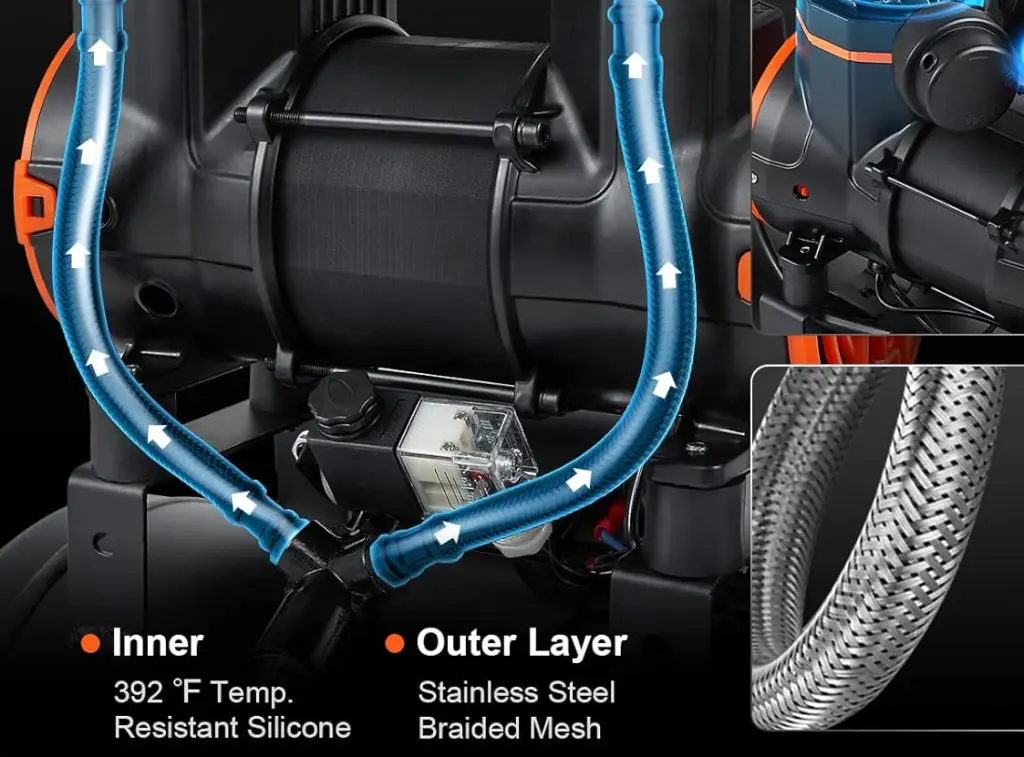Spray painting is a popular technique for applying paint to a variety of surfaces, including wood, metal, and plastic. It is a versatile and efficient way to achieve a smooth and even finish. However, to achieve the best results, it is important to choose the right air compressor for your needs.
What is an air compressor and how does it work?
An air compressor is a machine that compresses air and stores it in a pressurized tank. The compressed air can then be used to power pneumatic tools, such as spray guns, sanders, and impact wrenches.
When using a spray gun, the air compressor provides the necessary pressure to atomize the paint, resulting in a fine mist for even application. The CFM rating of the air compressor determines how much air it can deliver per minute. A higher CFM rating is necessary for spray guns with larger nozzles or for spraying thicker paints.
Why is it important to choose the right air compressor for spray painting?
The type and size of air compressor you choose will have a significant impact on the quality of your spray-painting results. A too small or underpowered air compressor will not be able to provide enough pressure to atomize the paint properly, resulting in a rough and uneven finish. A too large or overpowered air compressor may be more expensive to purchase and operate, and may also be more difficult to control.
Factors to consider when choosing an air compressor for spray painting.
- Tank size: The size of the air compressor’s tank determines how long it can run before needing to refill. For smaller projects, a 4–10-gallon tank may be sufficient, but for larger projects, a tank size of 20-30 gallons or more may be necessary.
- CFM rating: The CFM rating of the air compressor determines how much air it can deliver per minute. A higher CFM rating is necessary for spray guns with larger nozzles or for spraying thicker paints.
- Type of spray gun: Different spray guns have different CFM requirements. It is important to match the CFM output of the air compressor to the requirements of the spray gun being used.
- Type of air compressor: There are two main types of air compressors to consider: oiled and oilless compressors. Oiled compressors are more durable and suitable for heavy-duty use, but they require regular maintenance and oil changes. Oilless compressors are low maintenance and more portable, making them ideal for small projects or occasional use.
- Size and portability: Consider the size and portability of the air compressor based on your specific needs. A compact and lightweight air compressor can be easier to transport and store, but may have a lower CFM output.
- Noise level: Some air compressors can be quite noisy, so if noise is a concern for you, look for models specifically designed for quiet operation.
Additional tips for choosing an air compressor for spray painting

- Buy a compressor with a higher CFM rating than you need. This will give you some headroom in case you decide to upgrade your spray gun or start spraying thicker paints in the future.
- Consider the type of power available to you. If you are only going to be using the air compressor in your garage or workshop, a standard 120V compressor will be sufficient. However, if you need to use the air compressor outdoors or at a job site, you will need a 240V compressor.
- Read reviews before you buy. There are many different air compressors on the market, so it is important to read reviews from other users before you make a purchase. This will help you to choose a compressor that is reliable and performs well.
Choosing the right air compressor accessories
In addition to the air compressor itself, there are a few other accessories that you may need for spray painting:
- Spray gun: The type of spray gun you choose will depend on the type of paint you plan to spray and the level of finish you want to achieve. For most general-purpose spray paintings, a high-volume, low-pressure (HVLP) spray gun is a good choice.
- Air hose: The air hose should be long enough to reach the area you are painting without being too long and cumbersome. Choose an air hose with a diameter that is large enough to support the CFM rating of the air compressor.
- Air filter: An air filter will remove moisture and contaminants from the compressed air, which can improve the performance of the spray gun and extend the life of the compressor.
- Pressure regulator: A pressure regulator allows you to adjust the air pressure to the desired level for the type of paint you are spraying.
Conclusion
By following these tips, you can choose the perfect air compressor and accessories for your spray-painting needs.
